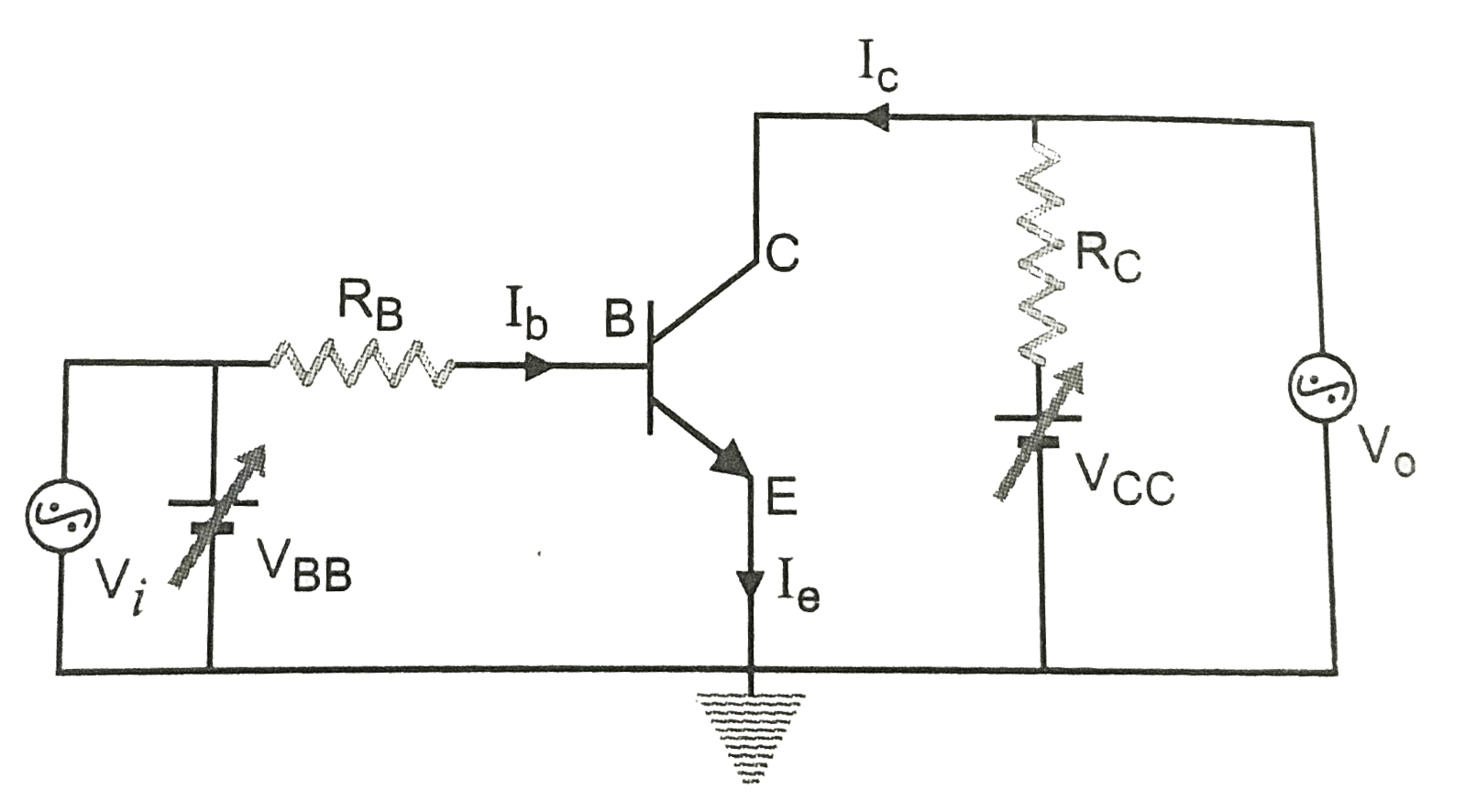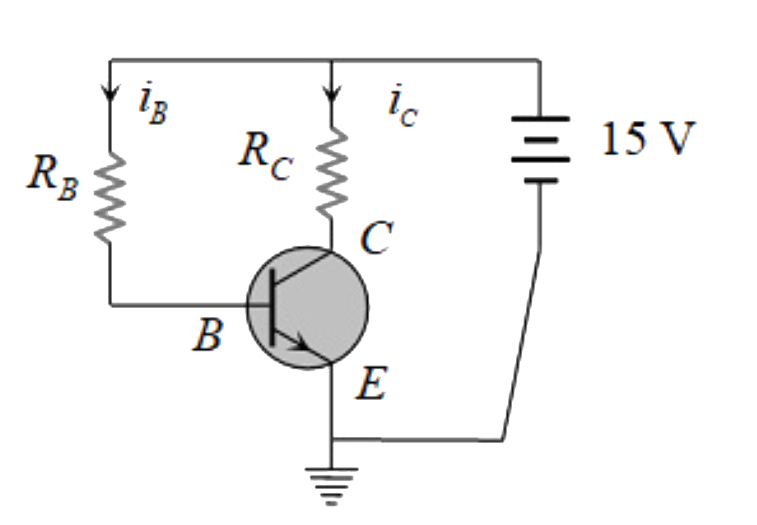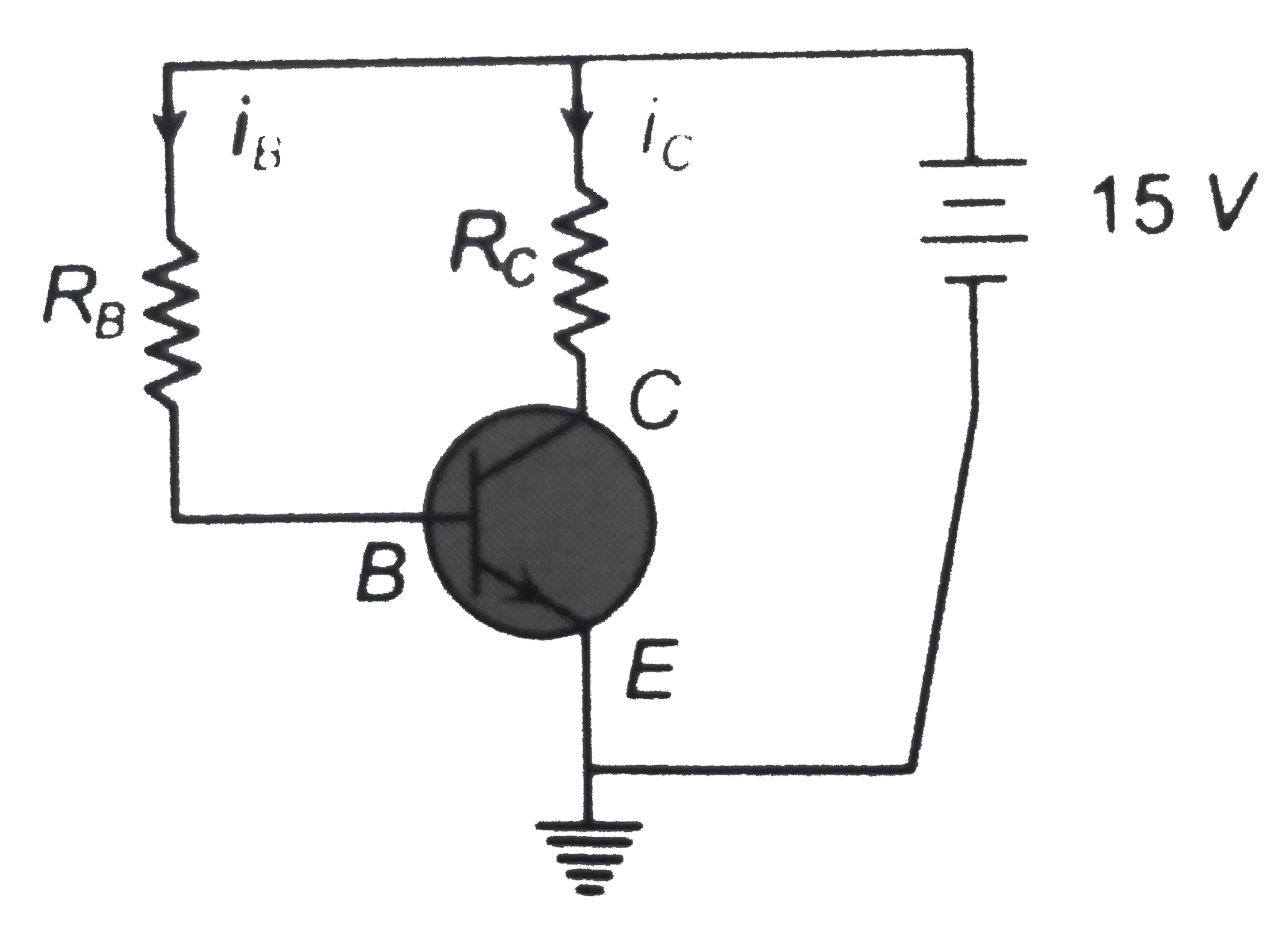
In the figure, given that VBB supply can vary from 0 to 5.0V,VC=5V,βdc=200,RB=100Kω,RC=1Kω and VBE=1.0V, The minimum base current and the input voltage at which the transistor will go to saturation, will be, respectively:
25μAand2.8V
20μAand3.5V
20μAand2.8V
25μAand3.5V
The correct Answer is:D
When switched on,
VCE=0
VCC−RCiC=0
iC=VCCRC=51×103=5×10−3A
iC=βiB
iB=iCβ=5×10−3200=25×10−6A=25μA
using KVL at input side,
VBB−iBRB−VBE=0
VBB=VBE+iBRB
=1+100×103×25×10−6
=1+2.5=3.5V
Similar Questions
In common emitter transistor as shown in Fig., the VBB supply can be varied from 0 V to 5.0V. The Si. Transistor has βac=250 and RB=100kΩ,Rc=1kΩ,VCC=5.0V. Assume that when the transistor is saturated, VCE=0V and VBE=0.8V. Calculate the minimum base current, for which the transistor will reach saturation. Hance, determine Vi when the transistor is 'switched on' find ranges of Vi for which the transistor is switched off and switched on.

View SolutionIn common emitter transistor as shown in Fig., the VBB supply can be varied from 0 V to 5.0V. The Si. Transistor has βac=250 and RB=100kΩ,Rc=1kΩ,VCC=5.0V. Assume that when the transistor is saturated, VCE=0V and VBE=0.8V. Calculate the minimum base current, for which the transistor will reach saturation. Hence, determine Vi when the transistor is 'switched on' find ranges of Vi for which the transistor is switched off and switched on.

View Solution
Knowledge Check
A common emitted amplifier circuit, built using an npn transistor, is shown in the figure. Its dc current gain is 250,RC=1Kω and VCC=10V. What is the minimum base current for VCE to reach saturation?
 A10μAB100μAC7μAD10μA
A10μAB100μAC7μAD10μAIn the R1=10Ω,R2=20Ω,R3=40ΩR4=80Ω and VA=5V,VB=10V,Vc=20V,VD=15V The current in the resistance R1 will be
 A0.4A toward OB0.4A away from OC0.8A toward OD0.8A toward O
A0.4A toward OB0.4A away from OC0.8A toward OD0.8A toward O
In the junction transistor voltage amplifier circuit of figure, if R1=100kΩ,R2=1kΩ,VCC=6.0V and VBE=0.6V current gain=60AIB=54μABIC=3.24mACthe voltage across R2=3.24VDthe voltage across the collector-emitter=3.24V
In the given figure, a transistor is connected in common emitter configuration . If VBE=1V and current gain β=100, then the voltage across collector- emitter terminals VCE is
[VBE-voltage across base-emitter junction ]

View SolutionIn the following common emitter circuit , if β=100,VCE=7V,R(C)=2kΩandVBE negligible , then IB is

View SolutionIn the figure shown RB=500KΩ,RC=8KΩ,VBB=10.6V and VCC=20V. The current amplification factor of the transistor is 100 and VBE=0.6 volt then which of the following is false?

View SolutionIn the following common emitter circuit if β=100,VCE=7V,VBE=Negligible, RC=2kΩ then IB=?

View SolutionIn the circuit shown in the figure, the input voltage Vi is 20V,VBE=0 and VCE=0. The values of IB,IC and β are given by:

View Solution